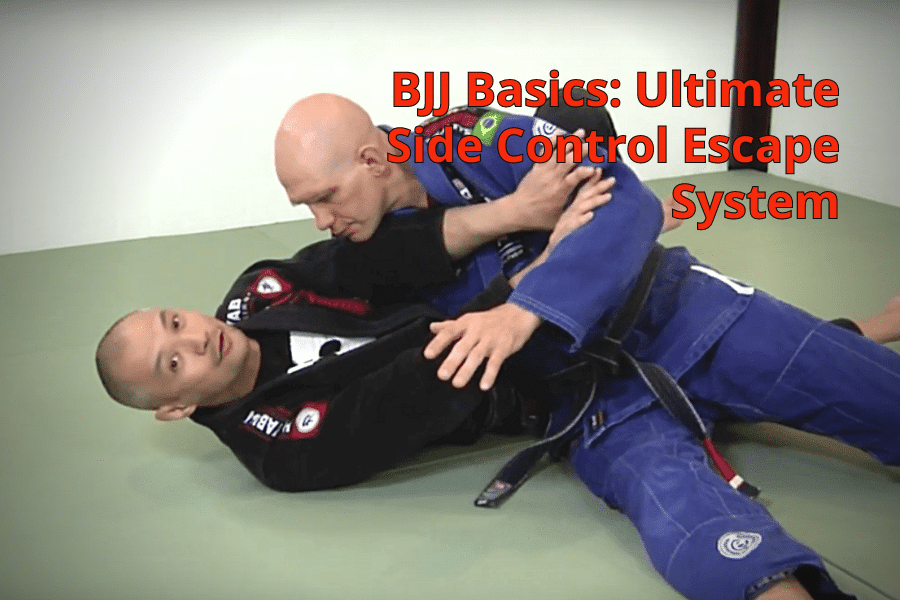
Table of Contents
A key component in BJJ Basics is the Side Control Escape.
Escaping Side Control is a set of techniques that you’ll use for as long as you do Jiu Jitsu.
Here’s the system I teach my beginner students to escape from this tough position.
Okay, let’s get going!
BJJ Basics: Side Control
We’re going to start thing’s off with what is Side Control?
Let’s first talk about passing guard. If you’re on your back and you have your legs pointed at your partner; then, you’re fighting from your Guard.
Think of the Guard as a wall I need to get around.
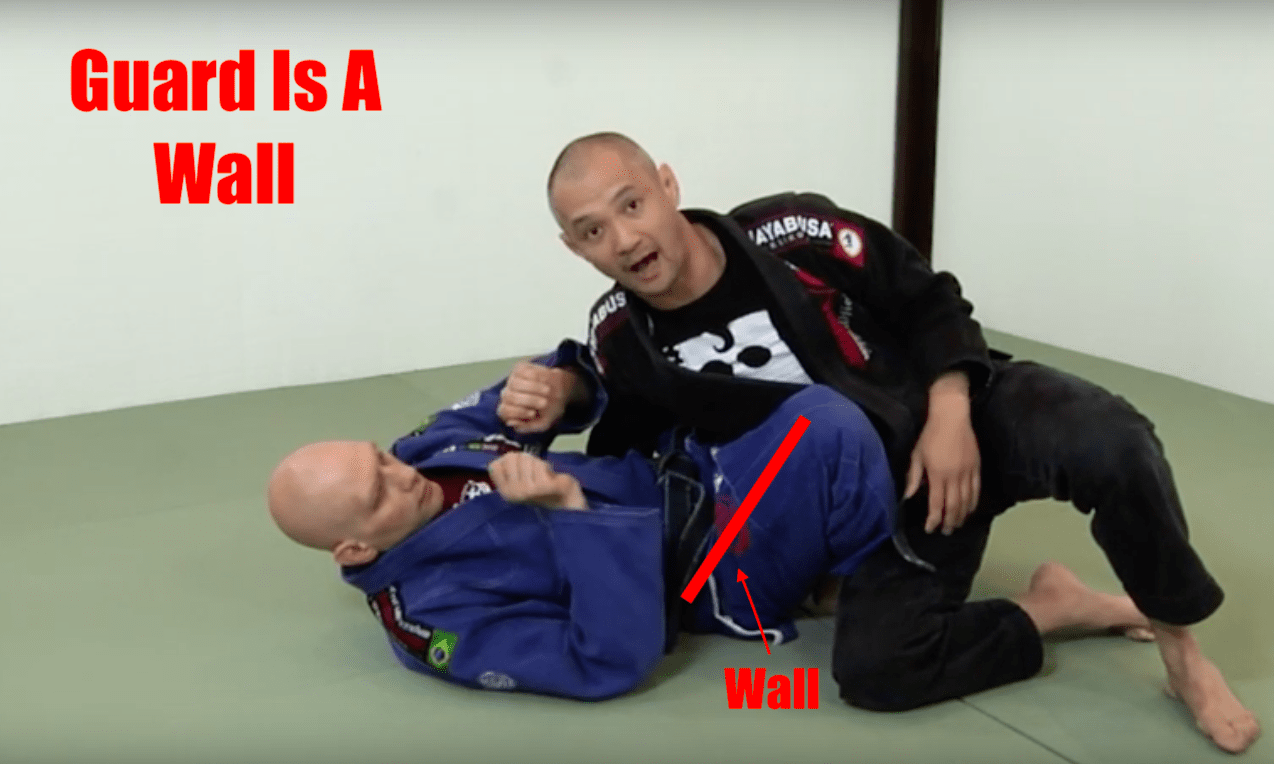
In BJJ, Guard Passing is just getting past the wall. As soon as I get over the wall, then I’ve got my partner stuck in bottom cross side.
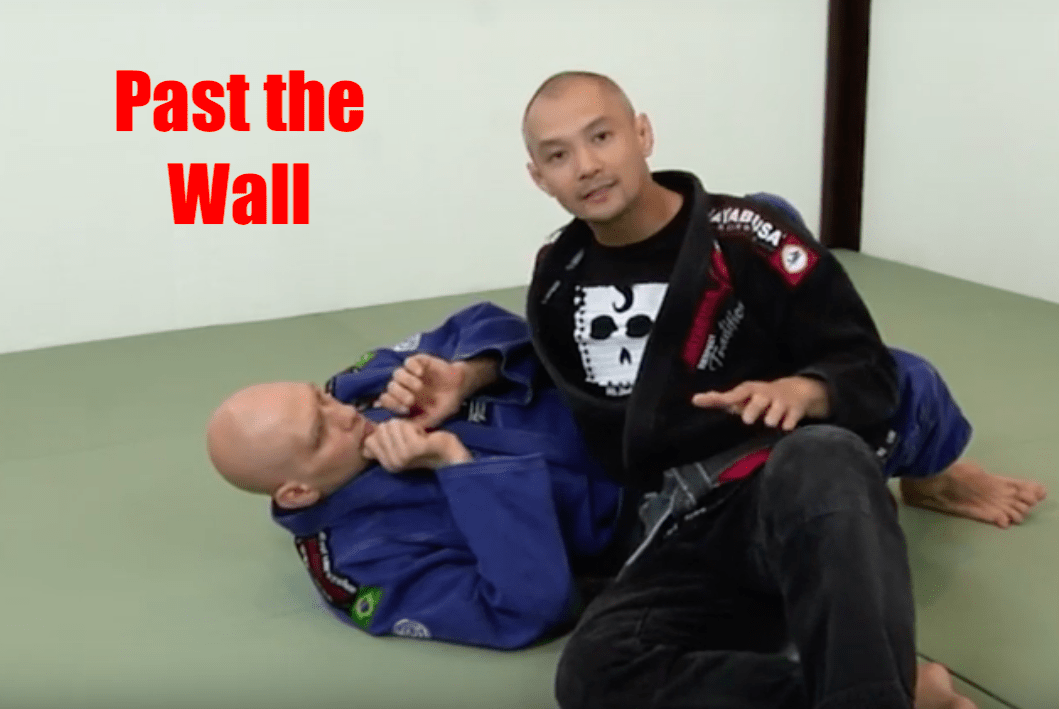
If you’re fighting from Bottom Cross Side and if you don’t escape soon then your partner is going to get 3 points from the referee.
The game now starts for you to start escaping Cross Side right away. Since you no longer have a Guard to fight from.
As soon as someone gets over your knee, you need to start working your Side Control escapes.
The Side Control Bicep Push Escape
Once someone has passed your guard, you can no longer use your legs to keep yourself safe; but, you can use your arms. Extend both of your arms to control their bicep.
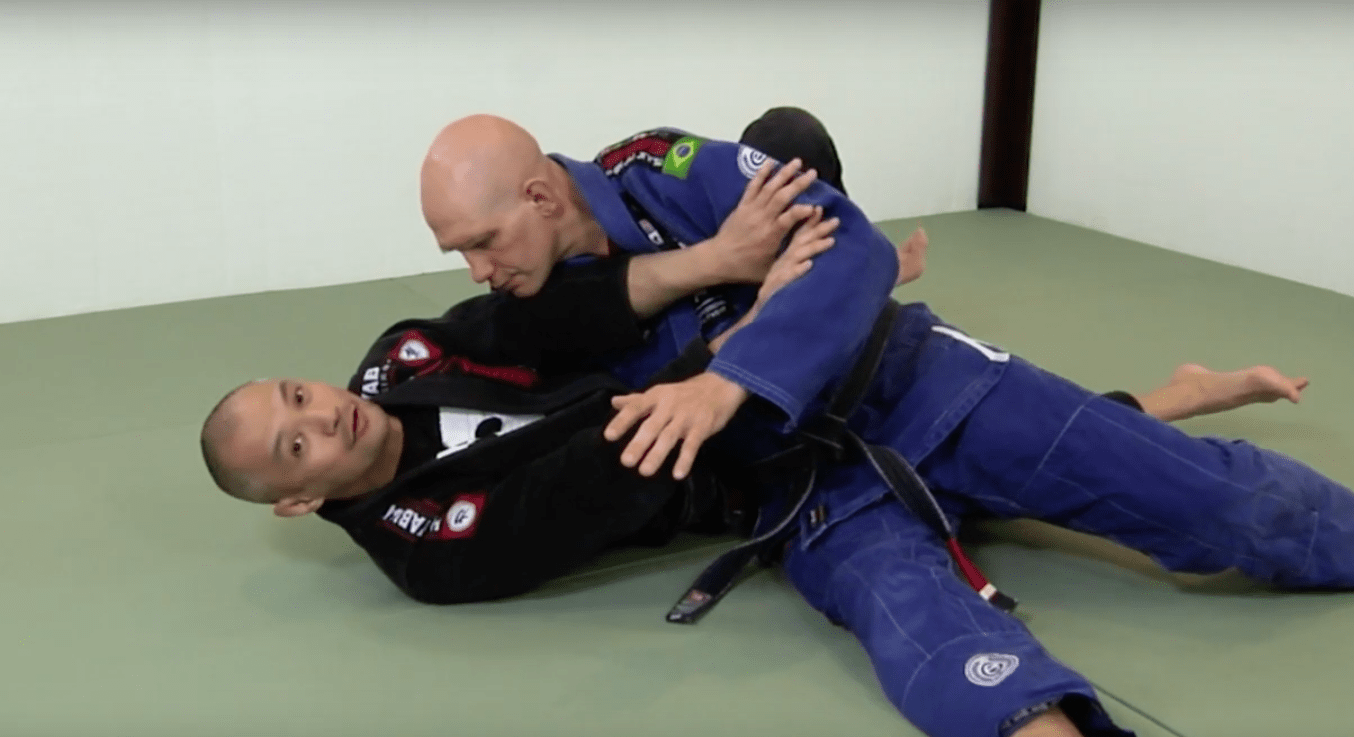
Once you’re controlling the bicep, kick up to help you sit up. Push their bicep as you push your other hand to the mat.
Then, walk backwards and your opponent will slide off of you and you’ll have escaped bottom cross side.
Now this works because most people don’t think it works. I’ve actually been doing this to people, and they’re looking at me confused as they fall over.
But you need commitment from the person on top. They need to be heavy and they need to be going for your neck.
Check out my video tutorial where I breakdown the Bicep Push Escape:
Cool 🙂
Let’s move on to the next part of my Ultimate Side Control Escape System .
ReGuarding
When someone has just passed your guard. Basically, you failed to control distance properly and your partner got over your knees.
But I can still use your hands to keep the distance.
Also, you want to stop your opponent from coming in and smashing your neck. That’s a universal truth when it comes to jiu-jitsu or boxing or fighting in general- ALWAYS protect your neck!
For example, in Boxing, you keep your chin down and you hunch my shoulders forward. If you focus on protecting your neck, you’ll keep your chin down and you’ll have a perfect Boxing stance.
In addition, you always want to protect your neck when you’re doing jiu-jitsu. Your partner wants to secure your neck – either as a Cross Face control or as a choke. Thus, always use whatever means necessary to keep your opponent away from your neck.
In this BJJ basic Side Control escape, you want to keep my arms locked out straight.
Even if your triceps are really strong and you can bench press 300lbs that’s not an efficient way to jiu-jitsu.
It should be noted that by keeping your arms locked out straight, you can keep your opponent’s hip close to your own hip. From this position, now you can hit the ReGuard.
A common mistake is to bridge straight up.
You want to bridge into your opponent. Thus, creating the freedom to move your hip back so you can ReGuard.
By ReGuarding from Bottom Cross Side, you’ll be able to hit a low risk, high percentage Side Control escape.
Check out what I mean here!
Now remember, a Side Control escape begins as soon as your opponent gets past your knees.
You need to make sure that your partner cannot get his elbow underneath your neck; otherwise, they’ll be able to crush your your jaw and neck with their shoulder.
I’m keeping him at bay with my arms, but furthermore I’m also keeping my feet on the floor, I’m moving up my hip and then I’m moving my shoulders.
The key thing you want to focus on is keeping your partner away with your arms. In particular, always be moving your head and moving your hips to create even more distance.
When you’re moving your shoulders and trying to escape Bottom Cross Side, your head will look like the tail of a fish. 😃
As you move your hips and walk with your shoulders, you also want to drive with your feet. You’re moving your feet so you’ll be in the optimum position to drive up with your hips, shrimp out and get your Guard back.
But the key thing is to move your head, and move your shoulders back. You’re pretending that your shoulder blades are feet, and you’re walking on your shoulders.
This is a critical skill. Being able to move when you are on your back is a critical skill for jiu-jitsu and one that is often neglected by many white belts.
It should be noted that the key thing is that you don’t want to wait until your partner locks down and controls your head to start you Side Control escape. Unquestionably, your Cross Side escape starts as soon as your partner passes the line of your knee.
Check out the video below. I break this all down in a more dynamic manner 😊
Now we’re going to be covering the Elbow Push Escape.
The Side Control Elbow Push Escape
The Elbow Push is largely dependant on timing. And is executed when your Bicep Push Escape fails.
The focus should always be to protect your neck. As your partner passes the line of your knee and is now looking to solidify Cross Side, you need to be blocking their lead arm with both of your arms.
Due to the weight and momentum of your partner you can pass your partner’s lead arm across your body and attempt to sit up. Clearly, timing this move is huge. If you’re too late and your partner already has your neck – it won’t work.
The first thing you need to do is create some space between you and your partner. Note the Gif above – see how I’m walking on shoulders to create space before I hit the Elbow Push.
The ideal scenario is to sweep your partner over with the Elbow Push escape. However, this doesn’t always happen. Nevertheless, you’ll force your partner’s weight off of you; thus, enabling your escape.
Now, let’s look at the Granby Escape from Bottom Cross Side.
The Granby Roll
The Granby is an escape that I think is super popular. The best jiu-jitsu practitioners in the world use the Granby to escape bottom cross side.
Unlike the previous escapes, now we’re looking to escape when you’re facing away from your partner. Clearly this is dangerous as your back is exposed but sometimes you have no other choice.
As you turn away from your partner, you still need to stay safe.
The first thing you need to do is check your partner’s shoulder.
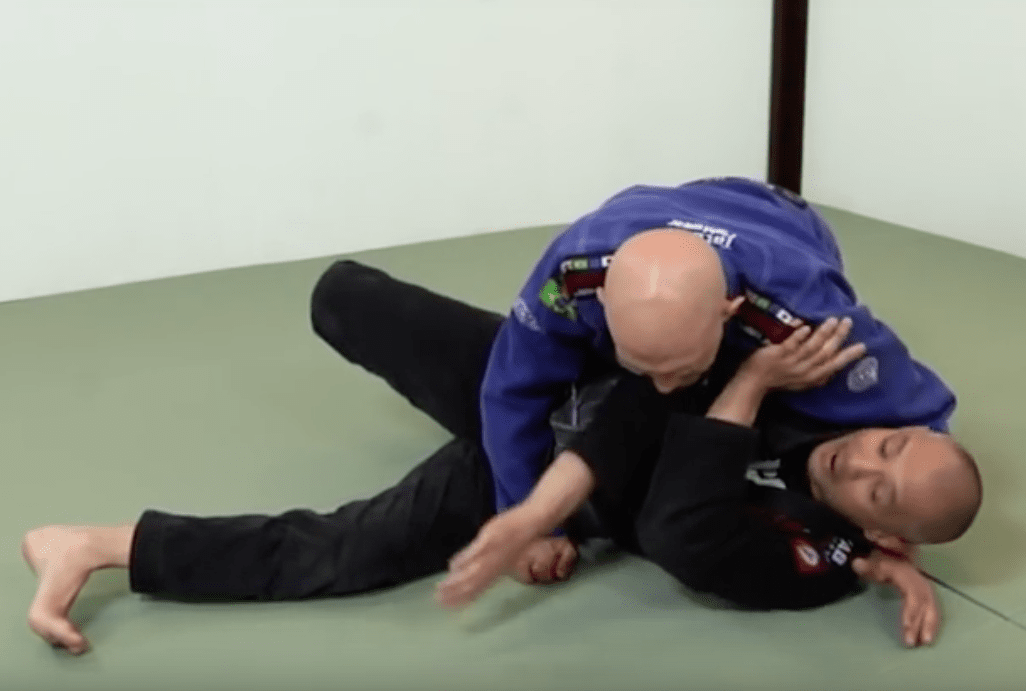
Now from here, you need to shrimp back and bring your nose forward to your knee. This subtle movement will create a little bit more room between you and your partner’s lead arm.
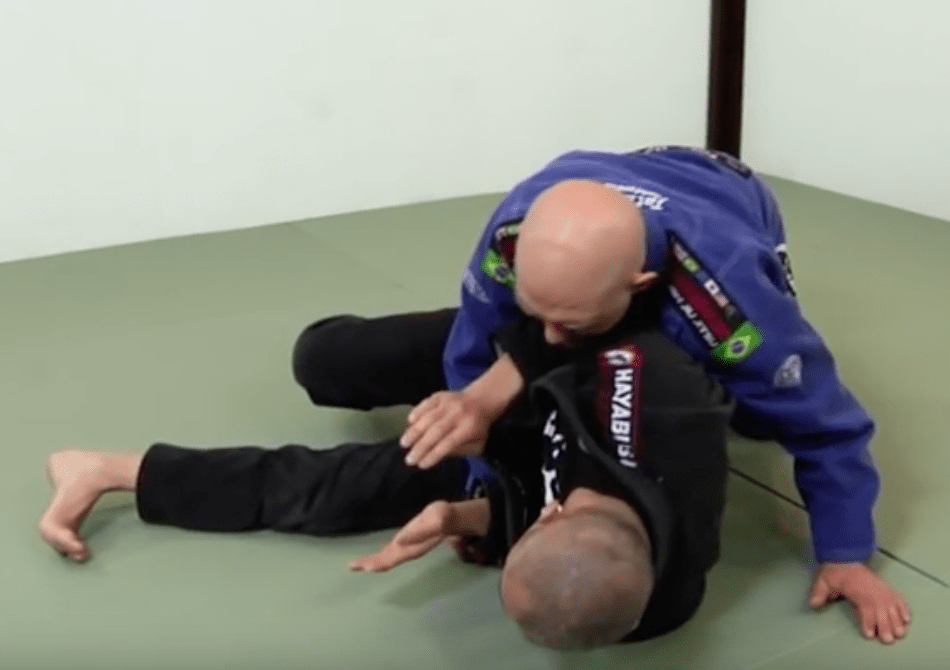
Once you have a little bit more room between you and your partner, you can monitor that space with your elbow. At this time, it’s your elbow that stops your partner from closing in on your neck.
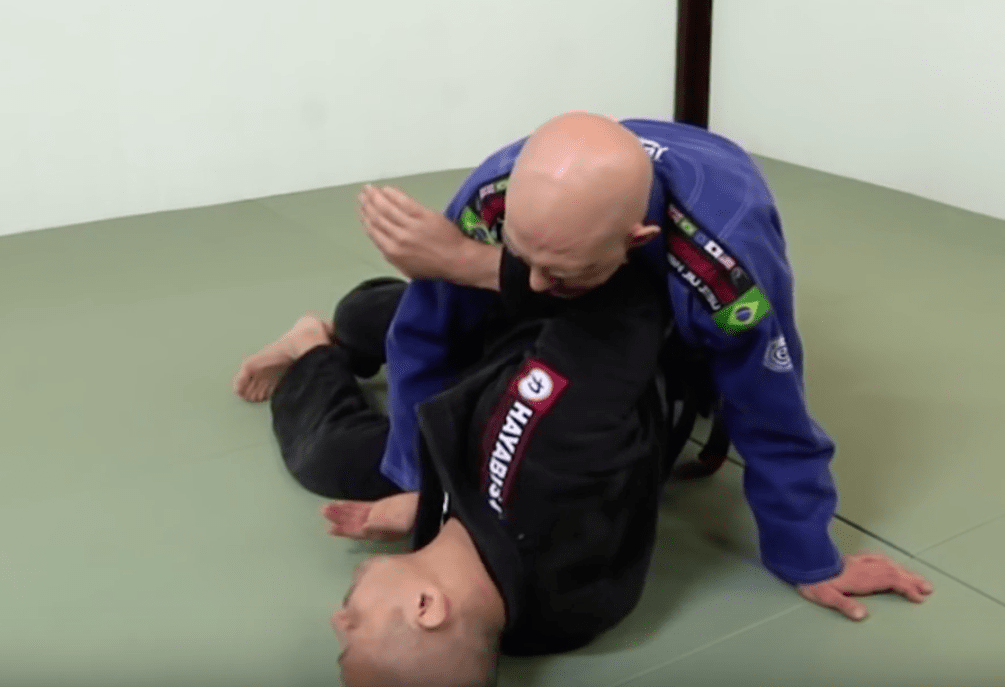
Next, push out a little bit and then bring your hip out to where your elbow is.
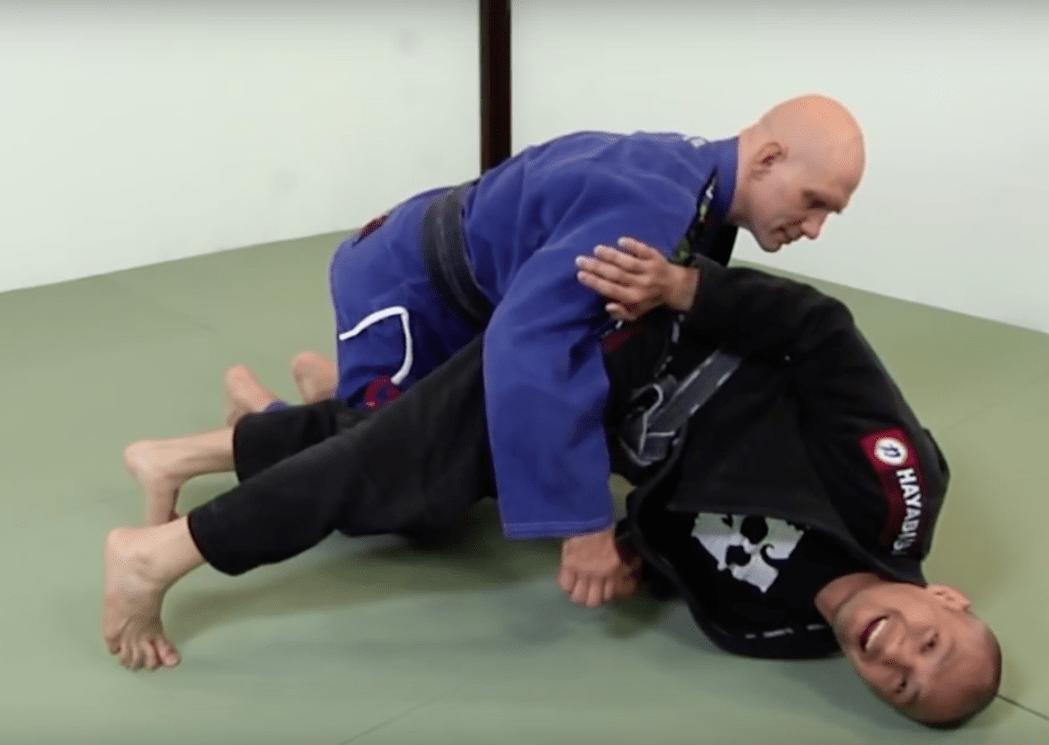
Basically, you’re using your hip and your back pocket to keep your partner away from your neck.
Of course you don’t want to stay here for long. Just keep your hip up for a split moment until you can safely turn and face your partner with your Guard.
The next technique is the Sit Up Escape.
The Side Control Sit Up Escape
The Side Control Sit Up Escape works when you’re in Bottom Cross Side and you are turned away slightly from your opponent.
The Sit Up Escape means that you’re basically just sitting up to escape Cross Side. Unquestionably, it’s just not that simple.
Along with the Granby Escape, the Sit Up Escape is also done when you’re facing away from your partner.
To initiate the Sit Up Escape, you need to establish a frame with your elbow against your partner’s neck. This will stop your partner from betting closer to you.
Once you have your elbow against your partner’s neck, kick up so you can sit up on your hand.
A key feature to making the Sit Up Escape work is to ensure that your chest is proud as you frame with your elbow and as you post up with your hand. By keeping your chest proud, your skeleton will be much stronger and you’ll be able to generate far more force.
Putting Everything Together
Let’s look at a BJJ basic Side Control escape when someone is crushing out your jaw and is controlling your neck.
Clearly, this is a tough situation for anyone. However, there is a solution.
As your partner is controlling your neck, you can still bridge and generate power with your hips. Importantly, the bridging movement is a swift left/right combination.
You’re attempting to turn your partner over.
It should be noted that you’re probably not going to get the sweep; but, you’re going to at least try. That’s the intent. You want to at least try to sweep a person over.
Now, if you’re trying to sweep the person over, what do they need to do in order to maintain that position?
They need to put their hands on the floor.
Once their hands are on the floor, then you can hit the escape of your choice.
Unquestionably, the escape that you hit is based on how the person on top is trying to maintain Cross Side.
And, most likely, your escapes will be done in a bunch of combinations.
But all these things are up to you to experiment with, to experience them, and to synchronize them in a way that works with your jiu jitsu.
You can see what I mean here in the video below!
This system for escaping bottom cross side is a compilation of some of my favourite Houdini-esque techniques for escaping from this tough and terrifying position.
I hope this helps you along your BJJ journey.



